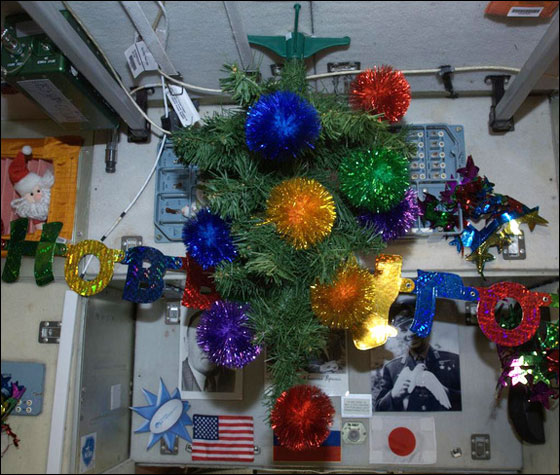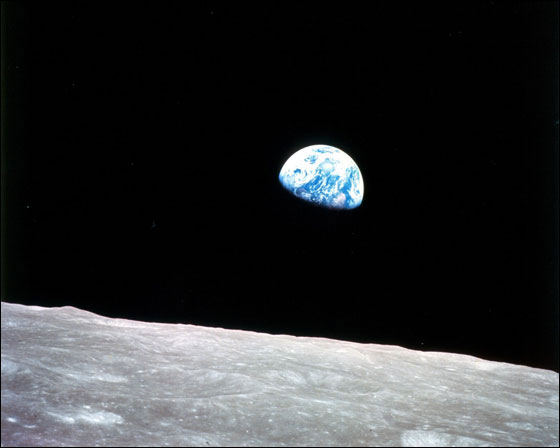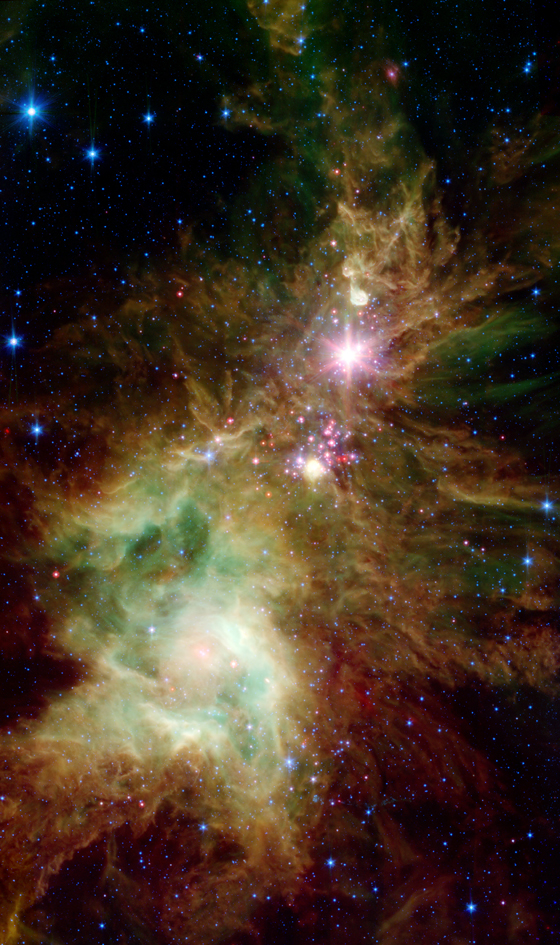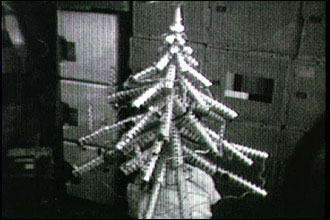Name A Star Live makes you part of real space missions by launching your star name into the final frontier. As humans like you move into space they bring along their customs and traditions — including Christmas.

Christmas Day is a NASA holiday, so the astronauts on the International Space Station get to take the day off. The space station astronauts have sent many holiday greetings to Earth. But the most famous Christmas message sent by astronauts to Earthlings was the Apollo 8 Christmas Eve transmission from astronauts in lunar orbit.

Image Credit: NASA
Commander Frank Borman, Command Module Pilot Jim Lovell and Lunar Module Pilot William Anders became the first humans to orbit the Moon on Christmas Eve 1968. They were also the first astronauts to spend Christmas in space.
To mark the occasion, they sent Christmas greetings and live images back to their home planet and read from the Book of Genesis. Borman closed the message with the words “good night, good luck, a Merry Christmas, and God bless all of you — all of you on the good Earth.”
It is estimated that as many as one billion people watched the historic broadcast or listened on the radio.
Apollo 8 launched from Earth on Dec. 21 and entered lunar orbit on Christmas Eve. The Apollo 8 crewmembers ended their history-making journey when they splashed down in the Pacific Ocean on Dec. 27. Eight more Apollo missions would visit the Moon, with six of them landing on its surface.
While astronauts have celebrated Christmas in space in the 1960s, in a sense, Christmas has been in space for over 100,000 years. We’re talking about the spectacular “Christmas Tree cluster”!

The Christmas Tree Cluster (a.k.a. “NGC 2264”) is located in the constellation Monoceros, near the Name A Star Live constellations Orion and Gemini. Newborn stars, hidden behind thick dust, are revealed in this image of a section of the Christmas Tree Cluster from NASA’s Spitzer Space Telescope. Infant stars appear as pink and red specks toward the center and appear to have formed in regularly spaced intervals along linear structures in a configuration that resembles the spokes of a wheel or the pattern of a snowflake. Hence, astronomers have nicknamed this the “Snowflake Cluster.”

Star-forming clouds like this one are dynamic and evolving structures. Since the stars trace the straight line pattern of spokes of a wheel, scientists believe that these are newborn stars, or “protostars.” At a mere 100,000 years old, these infant structures have yet to “crawl” away from their location of birth. Over time, the natural drifting motions of each star will break this order, and the snowflake design will be no more.
Whether celebrated on, or off, the planet, Christmas is a beautiful, joyous time of the year! Name a star for a friend or family member this Christmas and make them part of our real space missions!
